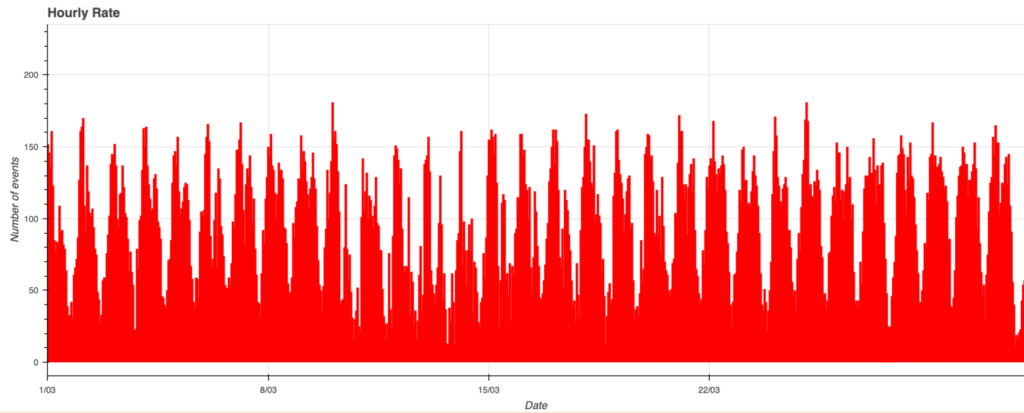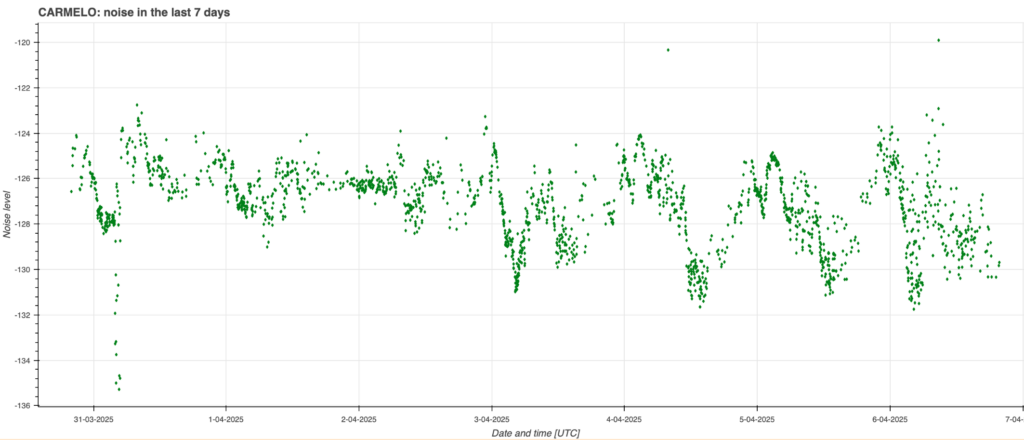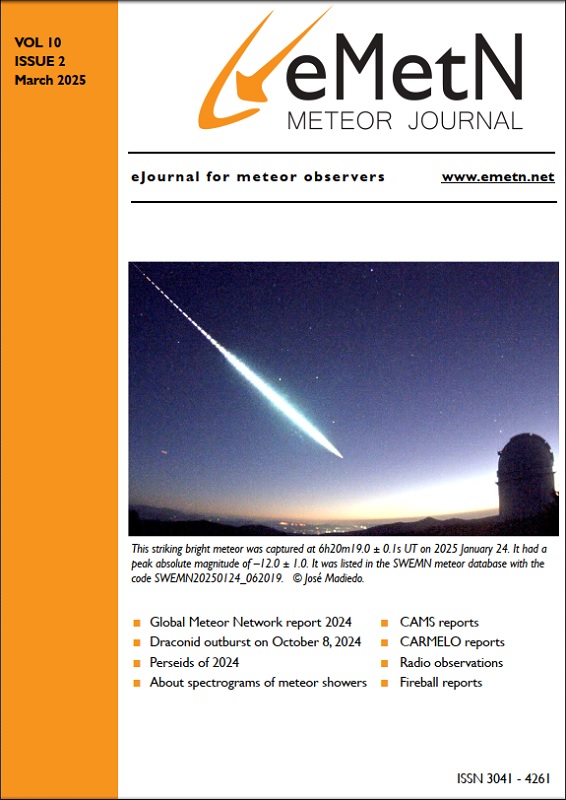Mariasole Maglione (Gruppo Astrofili Vicentini)
Lorenzo Barbieri (CARMELO network and AAB: Associazione Astrofili Bolognesi)
Introduction
March, like February, is one of the least active months in terms of the passage of large meteor showers. While waiting for the peak of the Lyrids, expected in the second half of April, we have focused our attention this month on some considerations regarding radio noise.
Methods
The CARMELO network consists of SDR radio receivers. In them, a microprocessor (Raspberry) performs three functions simultaneously:
- By driving a dongle, it tunes the frequency on which the transmitter transmits and tunes like a radio, samples the radio signal and through the FFT (Fast Fourier Transform) measures frequency and received power.
- By analyzing the received data for each packet, it detects meteoric echoes and discards false positives and interference.
- It compiles a file containing the event log and sends it to a server.
The data are all generated by the same standard, and are therefore homogeneous and comparable. A single receiver can be assembled with a few devices whose total current cost is about 210 euros.
To participate in the network read the instructions on this page.
March data
In the plots that follow, all available at this page, the abscissae represent time, which is expressed in UT (Universal Time) or in solar longitude (Solar Long), and the ordinates represent the hourly rate, calculated as the total number of events recorded by the network in an hour divided by the number of operating receivers.
In fig.1, the trend of signals detected by the receivers for the month of March.
March is one of the least active months of the year for meteor observation. No major peaks of known meteor showers occur during this period, and the overall activity remains dominated by sporadic meteors. Radio observation networks, such as CARMELO, record a relatively low and stable daily rate of meteor echoes, with no significant variations.
The echoes recorded during the month, therefore, are mostly echoes produced by meteors of small mass and low energy, generating radio reflections of short duration (less than one second) and low intensity.
The noise
In radio meteor observations conducted by networks such as CARMELO, radio noise represents one of the most critical elements to be understood, monitored, and, to the extent possible, mitigated. It is useful to distinguish between three basic components of noise:
1. The noise intrinsic to the apparatus, generated by the thermal agitation of electrons in electronic circuits. This is an ineradicable physical noise, the power of which is proportional to the temperature of the system according to the Boltzmann equation:
P = kTΔF
that is, the higher the temperature, the higher the noise, as also known by astrophiles who cool CCD cameras for the same reason. In the formula, P is the average power of the noise in Watt, k is the Boltzmann constant of 1.380 649×10-23 J/K, T is the absolute temperature in Kelvin, ΔF is the bandwidth in Hertz, that is, the frequency range over which the noise is measured or observed. The wider the band, the more noise is integrated.
In CARMELO receivers, when bench tested on 50 Ohm impedance, the intrinsic noise is below -130 dBm, in line with what is expected from VHF circuits, although the theoretical limit for passive circuits is around -140 dBm.
2. Natural external noise, which is added to the intrinsic noise once the antenna is connected. This includes:
– Atmospheric noise, related to ionosphere activity, particularly electrical discharges (lightning) and disturbances caused by solar activity.
– Galactic and cosmic noise, related to the emission of Milky Way radio sources and cosmic microwave background (CMB). The perceived level varies depending on the direction to which the antenna is pointed.
3. Anthropogenic noise, that is, noise generated by human activities. This type of noise can be considered true radio pollution, and today it represents the most problematic component, for the network. Its sources include 4G/5G towers, radio links for data transmission, and increasingly satellites for direct-to-cellular telephony (such as SpaceX’s Starlink constellation).
One of the major difficulties lies in the fact that these sources are not stable over time: mobile network operators can turn transmitters on or off, vary emitted powers based on traffic, or, in the case of satellites, their influence depends on passing in orbit over the observation area. The result is variable noise that is difficult to model or filter statically.
The noise and CARMELO
It is clear from the CARMELO network data that receivers located in radio-quiet areas exhibit overall noise levels (intrinsic + external) around -130 dBm, as expected. However, some observers record much higher levels.
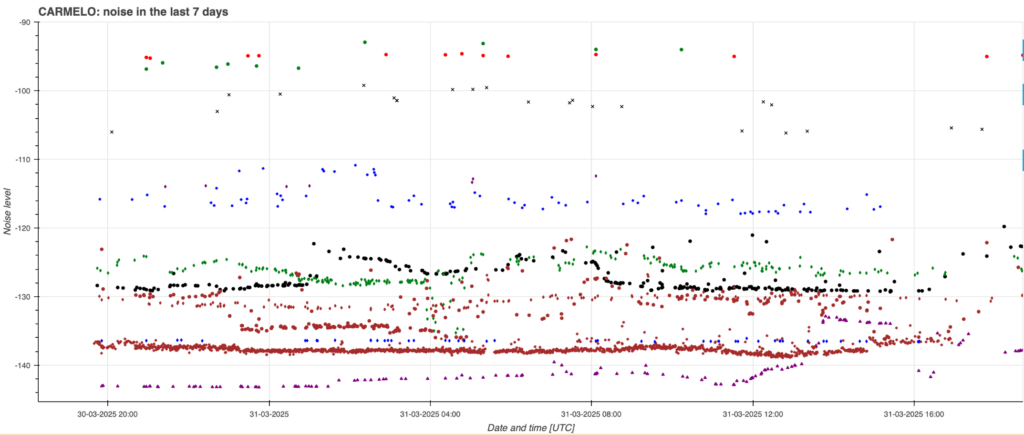
Fig. 2: Noise trend of different network receivers from 20:00 on March 30 to 20:00 on March 31, 2025. Different colors and symbols correspond to different observers.
In fig. 2 we note how some observatories are at overall noise values between -110 and -90 dBm. The noisiest in the graph are, in order from the loudest to the least noisy: in red, a receiver placed in San Giovanni in Persiceto, in the province of Bologna; in green, a receiver of the Associazione Astrofili Bolognesi (AAB) in Medelana, also in the province of Bologna; with the black cross, the receiver in Derbyshire in England; in blue, a receiver in Orciatico (PI); and in purple, in Belluno. These are receivers placed in the vicinity of 4G/5 G towers or data transmission radio links for the Internet.
However, we also note other types of noise behavior that appear to be attributable neither to atmospheric phenomena nor to constant anthropogenic interference. An interesting example is the receiver in Foligno (in fig. 3), in the province of Perugia. The data collected over the past seven days, show a noise pattern, with regular oscillations on scales of several hours that are difficult to attribute to natural causes.
This pattern does not seem to be compatible with a classical on/off effect of terrestrial equipment (such as routers, industrial systems or radio exchanges), but has a more gradual and cyclic structure that is difficult to explain with static or local sources.
Among the hypotheses we considered, one of the most plausible involves the transit of satellites. However, the duration of the peaks seems incompatible with the isolated passage of a single satellite in low orbit, whose direct effect would typically be much shorter. This leads to shift consideration to constellations or “trains” of satellites, such as those used for direct telephony (such as precisely Starlink).
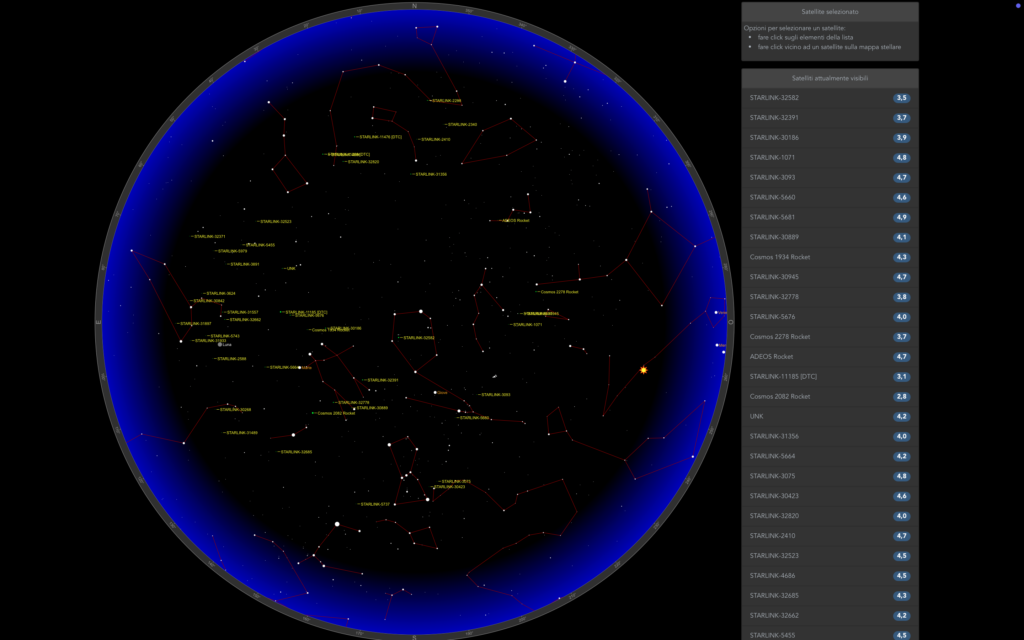
Fig. 4: Screenshot at 5:33 p.m. on April 7, 2025 of satellites passing over Foligno (PG) from the Heavens Above site.
Useful tools for monitoring the passage of satellites are:
- Heavens Above (1) through which you can track the passes and trajectories of different satellites transiting over a given location in real time.
- Satellite Map (2) useful for seeing how many satellites pass over a certain area and whether they do so in sequence, visually checking when a constellation transits that area, and identifying the most active constellations.
A paper published in September 2024 (3) brought new evidence to the growing concern about interference generated by direct-telephony satellites. In particular, the study shows how some satellites, designed to communicate directly with mobile devices on the ground, operate in radio bands very close to those used by scientific receivers for observing meteors, galaxies and transient signals.
These satellites emit active, directional signals to specific areas of the planet, and their influence on the noise recorded by terrestrial receivers is not constant, but related to the orbital position of the satellite and the configuration of the transmitted beam. This dynamic behavior makes it difficult to predict and filter associated noise, and risks compromising data quality, especially in systems operating at relatively narrow bandwidth and low signal power.
The risk, which is already tangible, is that the increase in the number of active satellites in the VHF band will lead to a systematic loss of sensitivity for unprotected radio networks, and make it more difficult to identify faint events, such as lackluster meteors or distant transient signals. Hence the need to work on advanced filtering strategies and network enhancement, both in terms of station density and in sharing and classifying noise patterns.
As far as CARMELO is concerned, this situation dictates two operational considerations about what will need to be done to lower this noise component:
- Work on the apparatus to filter interfering signals, both at the hardware level (reducing bandwidth) and at the software level, using digital filters to reduce false positives.
- Interpret meteor rate data with caution, since an increase in noise, lowers the number of detectable meteors. A low rate does not necessarily imply a real decrease in events, but could reflect a disturbed radio environment.
In this framework, increasing the number of receivers in the network is not only useful to improve spatial coverage, but becomes essential to compensate and mediate for local variations in noise, improving the reliability of the resulting data.
The CARMELO network
The network currently consists of 14 receivers, 13 of which are operational, located in Italy, the UK, Croatia and the USA. The European receivers are tuned to the Graves radar station frequency in France, which is 143.050 MHz. Participating in the network are:
- Lorenzo Barbieri, Budrio (BO) ITA
- Associazione Astrofili Bolognesi, Bologna ITA
- Associazione Astrofili Bolognesi, Medelana (BO) ITA
- Paolo Fontana, Castenaso (BO) ITA
- Paolo Fontana, Belluno (BL) ITA
- Associazione Astrofili Pisani, Orciatico (PI) ITA
- Gruppo Astrofili Persicetani, San Giovanni in Persiceto (BO) ITA
- Roberto Nesci, Foligno (PG) ITA
- MarSEC, Marana di Crespadoro (VI) ITA
- Gruppo Astrofili Vicentini, Arcugnano (VI) ITA
- Associazione Ravennate Astrofili Theyta, Ravenna (RA) ITA
- Akademsko Astronomsko Društvo, Rijeka CRO
- Mike German a Hayfield, Derbyshire UK
- Mike Otte, Pearl City, Illinois USA
The authors’ hope is that the network can expand both quantitatively and geographically, thus allowing the production of better quality data.
References
(1) Heavens Above: https://heavens-above.com/
(2) Satellite Map: https://satellitemap.space/
(3) Bassa, C. G. et al. (2024): Bright unintended electromagnetic radiation from second-generation Starlink satellites, Astronomy & Astrophysics, Vol. 6895
